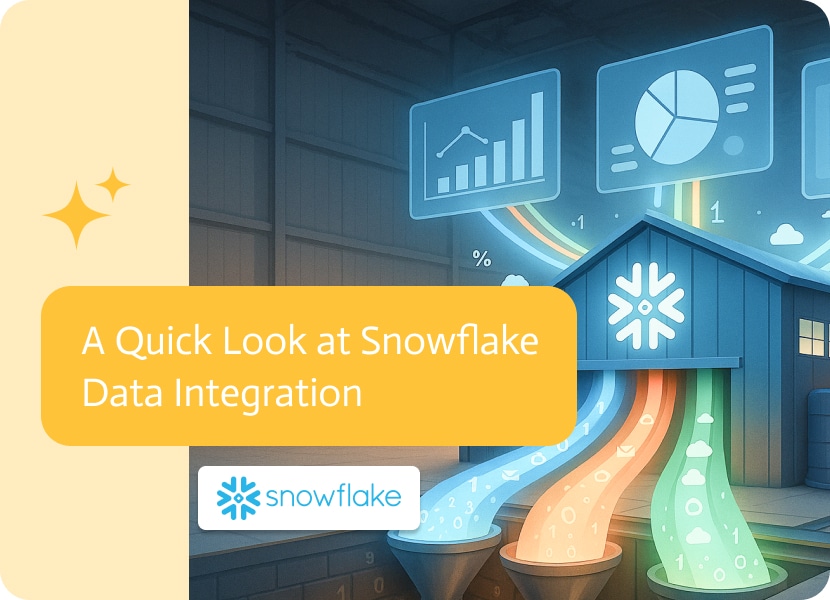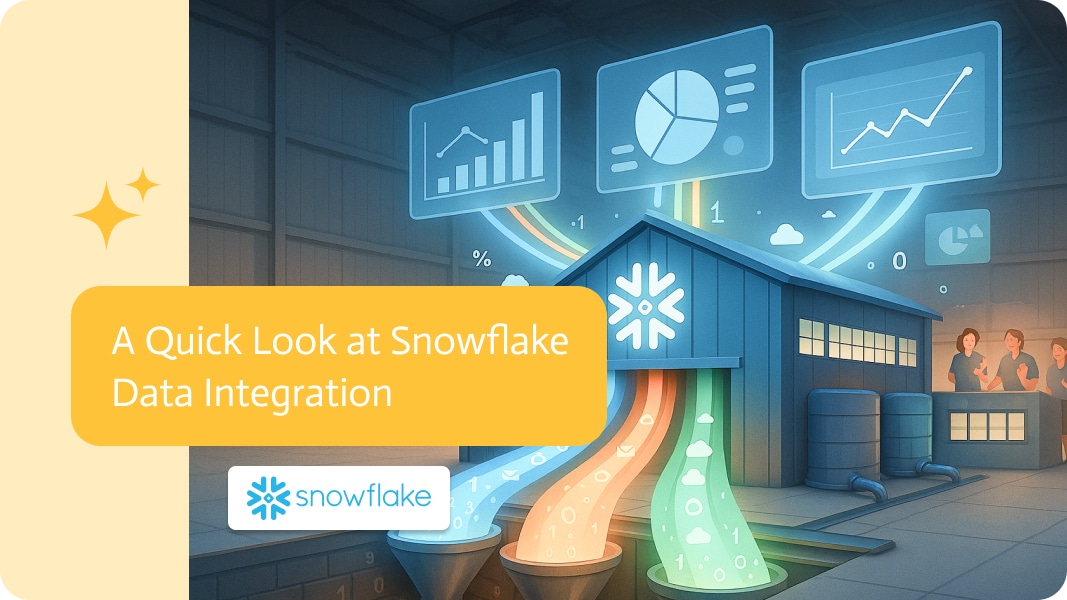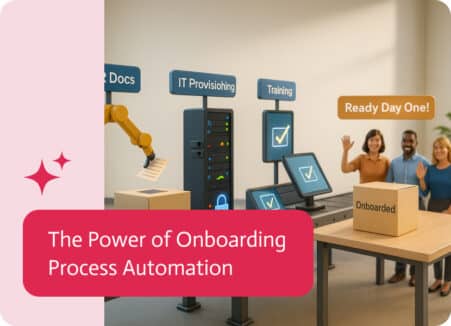

A Quick Look at Snowflake Data Integration
Snowflake data integration is really about connecting the Snowflake platform with almost any source you can imagine, from websites, apps, and sensors to legacy databases. When you set up those connections, data flows smoothly instead of piling up in silos.
Every app, device, and log file spits out rows of numbers and letters, and someone has to gather that mess before it can be useful. Integration isn’t just hauling those rows from A to B; it’s making sure they talk to one another and are ready to answer questions. Without that step, even the slickest dashboard is just glittering emptiness.
What Is Snowflake, Anyway?
Snowflake is both a company and a product that lives in the cloud from launch to log-off. Think of it as a data warehouse with built-in elastic muscle and the neighborhood flexibility of on-demand analytics engines. You don’t have to worry about spinning disks or constant upgrades; the platform stretches and shrinks as your backlog of records swells and shrinks.
- Snowflake runs on all the big clouds: Amazon Web Services, Microsoft Azure, and Google Cloud. This multi-cloud freedom lets companies pick the environment that fits their needs yet keep everything in sync.
- The platform really shines thanks to its decoupled design, with compute power and storage sitting on separate tracks. You can pump up processing when demand spikes and dial it back later without paying for dormant disk space. Massive files can sit quietly while you churn through queries, and the bill only moves for what you actually use.
- Another head-turner is built-in data sharing. Colleagues, partners, or even outside analysts can tap live tables without anyone having to shuffle or copy datasets first. That instant access leaves traditional warehouses in the dust.
- From real-time query speed to handling thousands of simultaneous users, performance never seems to choke. Security is woven in at every turn, which is why banks, hospitals, retailers, and growth-hungry tech firms keep reaching for it.
- Bringing data into Snowflake is less about cables and more about clarity. You pull bits from sales logs, chat records, IoT feeds, and whatever else exists, then mold them into a single, consistent view. In other words, integration here is a strategic play, not a wires-and-boxes chore.
Why You Should Care
Imagine a sales team logging calls in Salesforce, a marketer sending newsletters through HubSpot, and an accountant running profit reports in QuickBooks. Each program keeps neat notes, yet none of them chat with one another. That’s why folks buzz about data integration; it stitches those silos together. There are three steps that go into integrating data with Snowflake:
- Pulling the Data In
The first phase, Extract, is simply snagging whatever info you can find. You might scoop numbers from PostgreSQL, grab flat files in CSV or JSON, or even haul records straight out of Salesforce, Shopify, or Zendesk. APIs, webhooks, and the stream of logs from IoT sensors also count. The point is to snag the data in its original, unpolished state, often on a schedule that runs behind the scenes.
- Getting It to Snowflake
Now the data has to move. Snowflake sits there waiting, and there are a few ways to drop the goodies in. You can bulk-load in batches, keep a steady trickle going with Snowpipe, or pump streams in real-time from Kafka or AWS Kinesis. Because Snowflake plays nice with S3, Google Cloud Storage, and Azure Blob, shipping structured files or messy semi-structured ones inches forward with barely a hiccup.
- Transform
The transform step is where messy rows of numbers finally turn into something you can trust and use. Once the data lands in Snowflake, most teams run through four quick chores:
- Clean: Get rid of duplicates and plug the holes where values are missing.
- Enrich: Mash up different sheets so you can see the bigger picture.
- Standardize: Make sure dates, currencies, and IDs all look and act the same.
- Model: Build views and tables that analysts and dashboards can reach without fuss.
Snowflake sticks with the ELT Rut, keeping the heavy lifting right in the warehouse rather than dragging it out first. That means teams can lean on plain SQL or handy tools like dbt, zip through the work faster, and keep the single source of truth locked in place.
Why Snowflake Data Integration Matters
Snowflake isn’t just another data warehouse, it’s a central system for the modern enterprise. But it only lives up to that potential when it’s fed the right data, from the right sources, at the right time. When done right, integrating data into Snowflake doesn’t just improve operations, it supercharges them.
Single Source of Truth
Most businesses today operate with data scattered across platforms: a CRM here, a billing tool there, maybe a legacy database tucked away somewhere. This fragmentation leads to version conflicts, blind spots, and confusion.
By funneling all relevant data streams into Snowflake, companies can establish a single source of truth.
- Consistent metrics across departments
- A shared understanding of customer behavior
- One unified dashboard that reflects reality, not six slightly different versions of it
This alignment is essential for meaningful reporting, strategic planning, and day-to-day operations.
Real-Time Access to Data
In the digital age, yesterday’s data is often too late. Snowflake supports near real-time data ingestion using tools like Snowpipe, Kafka connectors, and cloud storage event triggers.
- Sales teams can react instantly to a surge in leads
- Operations can detect supply chain disruptions as they unfold
- Customer support can escalate issues based on real-time usage signals
With live data flowing into Snowflake, decision-makers no longer operate with lagging indicators, they work with live dashboards, up-to-the-minute analytics, and instant insights.
Scalability Without Performance Trade-Offs
Many data platforms shout about handling large data volumes, yet they wobble the second petabytes roll in. Snowflake looks nothing like that because speed and size were stitched into its DNA.
Inside, a multi-cluster compute setup watches the workload. Light dashboard clicks get quick juice; punishing machine-learning batches do, too. No one waits in line, no late-afternoon tuning grind, and no 2:00 a.m. panic call.
Compute is separated from storage, so the bill you see skips the usual fee for unused servers. Pay only for what actually spins. Flexible scaling keeps costs fair.
Effortless Data Sharing Across Teams and Partners
Old-school data hand-off meant zipping files, juggling FTPs, or burning midnight oil on copies. All of that drags, invites mistakes, and leaks security like an open faucet.
- Snowflake Secure Data Sharing flips the script: push data once, then point everyone to the same spot.
- Permission knobs let you decide who sees what and when.
- Recipients see the freshest dataset, period. No lag, no upload grind, just clean data flowing easily between departments or even partnering companies.
Real-World Use Cases
So what exactly does all this theory look like when the spreadsheets close? Here are a few everyday scenes where Snowflake pulls messy data into a neat row.
Marketing Analytics
Picture a busy marketing crew juggling Google Analytics numbers, Meta Ads stats, LinkedIn insights, and data from Mailchimp or HubSpot. Toss in Salesforce customer notes, and performance can start to feel like a blindfolded dart game.
- Connect those sources inside Snowflake, and everything lights up on one dashboard.
- Team members finally see the full journey from first click to purchase.
- Attribution points to the ad or email that really sent people over the finish line.
- ROI ticks upward in real time instead of waiting for next month’s closeout report.
Even cooler, custom audiences can be spun up directly within Snowflake and sent to paid platforms without ever wrestling with another CSV export. That saves time and, let’s face it, a lot of frustration.
Financial Reporting & Compliance
Now imagine a finance team pulling daily numbers from NetSuite or SAP, slicing through Stripe batches, and lining that all up with QuickBooks. If that pipeline stalls for even a day, closing books on time feels impossible.
- Snowflake integration keeps the money trail feeding in nonstop.
- Transactions pool in one place, so earnings reports update the moment a payment clears.
- Balance sheets are no longer bedtime copy-paste projects; they run off live data.
- Version history and access logs tag along, quietly proving every change that was made.
This isn’t just a speed play; it’s the difference between breezing through an audit and scrambling under a stack of bank statements. Risk drops, and peace of mind rises.
IoT and Sensor Data
Picture a factory floor, a delivery warehouse, or a house packed with smart gadgets. Sensors in all those places are nonstop, firing off numbers for temperature, GPS, pressure, and machine run-time.
When that stream pours into Snowflake via Kafka, Snowpipe, or a simple cloud-upload trigger, the payoff is quick:
- Operators can peek at what’s happening right this second.
- Odd spikes show up fast, so teams can fix problems before anything breaks.
- Staff use historical patterns to tweak workflows and squeeze out wasted time.
Another perk? Snowflake eats both tidy tabular data and messy JSON without anyone having to scrub it first.
Machine Learning Pipelines
Data scientists don’t just want a warehouse; they crave a feature store that hands over clean, labeled info ready for the next model.
Inside Snowflake, that wish gets answered by layered pipelines that run like clockwork:
- Raw bits from CRMs, payment logs, or user clicks get pulled in.
- dbt jobs or quick SQL snippets crunch numbers, merge tables, and tidy up encodings.
- Finished sets land in a spot where SageMaker, DataRobot, and Azure ML pick them up without fuss.
Models do their magic, forecasts land back in Snowflake, and business folks can grab them with the same dashboards they use every day.
Noca Eases The Process
People without technical expertise can use Noca.ai to simplify the process of integrating Snowflake data. It maintains privacy and flexibility while linking your tools and implementing automated data syncs.
Noca makes Snowflake integration easy, so your team can spend more time using the data and less time moving it, whether you’re trying to stop manual CSV imports, launch a modern data platform, or clean up a fragmented tech stack.
Final Thoughts
Hook your data to Snowflake, and it stops being a quiet file in a corner; it steps out and helps you run a sharper, quicker, tougher business. A marketer nailing user journeys, a CFO sweating an audit, or an engineer tweaking an IoT loop all wind up on the same page because the info is finally in reach.
The magic is pulling data from REST APIs, legacy databases, CSV dumps, or that SaaS app everyone swears by and parking it in Snowflake for lightning-fast questions and answers. Batch, real-time, and streaming, you name it, Snowflake eats the feed and still has room to grow.


